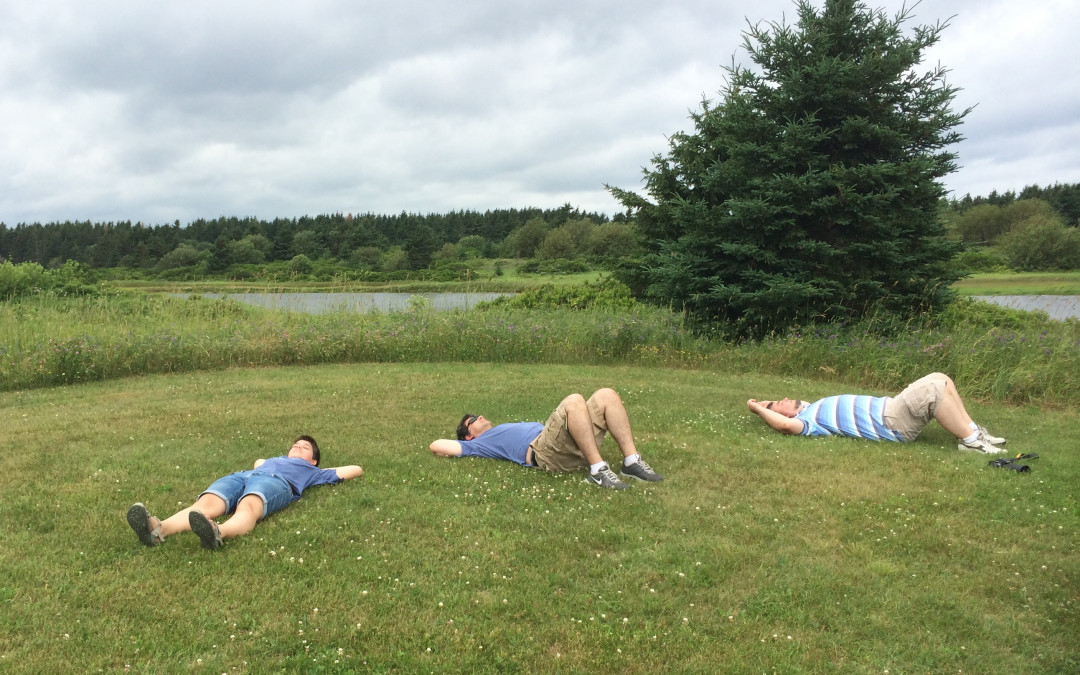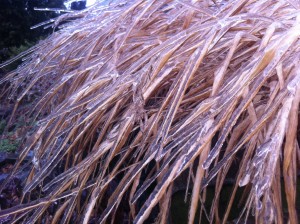
by Amy Nyman | Feb 23, 2016 | Ecological Gardens, Sustainable Gardening
Organic garden products such as pesticides (insecticides, herbicides, fungicides, etc.) and fertilizers are usually marketed as a more natural and safer approach to garden maintenance. People interpret this to mean that products derived from natural sources won’t harm the user or the environment. It is important to realize that both organic and synthetic products are chemical compounds. Any chemical compound, both organic and synthetic, has the potential to cause harmful physical side effects. Any chemical compound, both organic and synthetic, also has the potential to cause harmful environmental side effects.
When garden products are sprayed or dusted on plants, or incorporated into the soil, those products leach into the soil or runoff into lakes and rivers when it rains causing chemical contamination and algae overgrowth. People pass by plants and gather the chemicals on skin and clothes, or inhale particles and dust. Children are more likely to have hand to mouth exposure and their small bodies put them at higher risk to smaller and less frequent exposure. Pets frolic in the lawn and gardens, inhaling the dust and ingesting lawn chemicals during their grooming, and are also at higher risk of exposure because of their small size.
Use of pesticides and fertilizers is often considered essential for successful ornamental and edible gardening, but there are healthier and safer alternatives. Supporting soil health and using a greater variety of plants will give you a more beautiful garden and encourage beneficial insects and birds to control pests while also decreasing your cost, work, and exposure to harmful substances.
Sustainable gardens first start with creating healthy soils that support an abundance of microorganisms which symbiotically support plant health. Some of these organisms break down nutrients, some attach themselves to plant roots to help plants use the nutrients, and some help create better soil texture so oxygen and water can move through the soil. Using chemical products disrupts the lifecycle of soil organisms, which will then disrupt the natural nutrient cycling of microorganisms and plants.
Sustainable gardens also include a diversity of plants which attract a variety of insects. You actually want to host a large number of insects in your garden for two reasons. First, to help keep pests under control. Beneficial insects are natural predators of garden pests. Insecticides will kill a broad spectrum of insects, both beneficial and pests (even if the product is labeled for only one type of insect). Because beneficial insects are also killed, this often leads to more insect pests in the garden, rather than less. Second, insects attract and support birds and other wildlife. If you kill the insects, you remove a lot of important food sources for local and migratory birds, and small amphibians and mammals.
Organic garden products will carry the same warning labels as synthetic products and are regulated the same way. Labeling includes both mandatory and precautionary statements and will include warnings of “Danger”, “Warning”, or “Caution”, based on whether the product meets the criteria for Toxicity Category I-IV (Category I and Danger being most toxic), and even inert ingredients are not necessarily non-toxic. For more detailed information, please refer to EPA information for Active and Inert Ingredients, Types of Pesticide Ingredients, and Label Requirements.

by Amy Nyman | Feb 17, 2015 | Ecological Gardens, Seasonal Interest, Wildlife Habitat
Winter often seems like an “off” season for the garden. There are no blooms, no butterflies, and many of the birds have flown south. But for those of us who live in a temperate climate, there are still a lot of things happening in the landscape.
For one, the cold is an important part of a plant’s life cycle. Dormancy allows a plant to save energy for the following season’s growth. It allows the plant to weather below-freezing temperatures without damage. Cold is required for many seeds to germinate.
Snow introduces small amounts of nitrogen into the soil. Snow insulates the ground, keeping it frozen, and helping to prevent frost heave. It also helps plants from sprouting too soon during un-seasonally warm weather. Microbial activity also continues at low temperatures. These microbes are important because they help break down soil nutrients to a form that plants can use. Plants don’t directly “eat” the soil, instead they have a symbiotic relationship with the soil microbes that help them utilize the nutrients. If you have happy, healthy soil, your soil microbes will still be busy during the winter.
Any remaining foliage, dead leaves, and coniferous trees and shrubs can provide a multitude of insects, birds, and animals with protection or food.
Ecological Landscaping Techniques
Many people advocate removing dead plant matter from the landscape in the fall. Although there is a chance of voles using leaf litter as protection and causing damage, there are many reasons. Learn which plants to remove leaf litter from and which can remain. Fruit trees and roses benefit from removing debris which can harbor fungal disease or pests from the ground under them. Elsewhere in the garden, this leaf litter serves many important functions. Read the pamphlet for a more detailed discussion: Life in the Leaf Litter (1.7 MB pdf)
Remember that keeping raw materials on-site is efficient and sustainable. It returns nutrients in your garden back to the soil and it decreases your town’s cost and fuel requirements for landscape waste removal and processing.
Plant Choices
Native plants often provide many more ecological benefits than introduced species, including cultivars. For instance, Rutgers hybrid dogwoods, a cross between kousa and native dogwoods, are sterile (meaning they do not produce seeds that will produce more plants) and the cultivar is more resistant to insects and disease. Also, the berries of the some plant cultivars, like ‘Winter Sprite’ winterberry, are not eaten as readily by birds as the native winterberry. If you mourn the fact that the berries of a plant are eaten by birds too quickly and you can’t enjoy the red color throughout winter, consider planting both a native and a cultivar. That way, you will not deprive the birds of an important winter food source. Your plant choices have an impact on other things beside the designed space, so if you are trying to have a sustainable or ecologically-friendly landscape, read about the plants you are considering or consult reliable sources like the New England Wildflower Society.

Ice Covered Grasses
Remember that some berry producing plants, like hollies, are dioecious and require both a male and female plant in order for the female to produce fruit. It is also important to plant species that are appropriate for the site based on the plant’s requirements for moisture, soil type, heat, cold, and light.
Natural Architecture
Another thing that I enjoy about plants in winter is that they provide striking architecture in the winter garden. This is one of the reasons that I don’t remove dead plants until spring. It isn’t just the coniferous trees and shrubs – I enjoy seeing the snow and ice on most of my plants.
I hope that despite the overwhelming amount of snow this season, you can find beauty in the important ways that the snow and cold weather provide valuable ecological services to our environment. Grab your snowshoes and go look for something unexpected!



